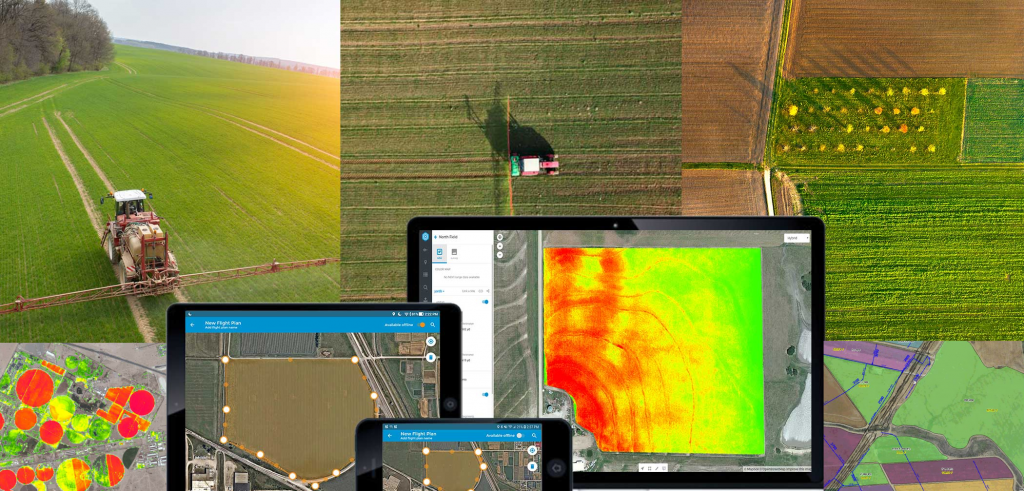
Executive Summary
Introduction and Scope
This is the final compiled report for kharif 2019 in Hisar, covers European Space Agency images analysis based results of acreage estimation of paddy crop health monitoring and NDVI based yield.
Star Agribazaar Technology Limited started developing crop area estimation procedures and crop yield models, based on the application of satellite remote sensing, GIS technology, agronomy, agro-meteorology, statistics and other allied disciplines.
Conventionally, Crops area estimation with a total satellite-based crop assessment has been developed to forecast and estimate crops statistics of major crops which includes paddy.
Excerpts of the Report
According to the report, the total paddy production in the district of Hisar has been divided into 4 talukas: Hansi, Hisar, Adampur and Narnaund. The individual crop production in Hansi, Hisar, Adampur and Narnaund is 98033 tons, 52420 tons, 793 tons and 38917 tons, respectively.
Predicted paddy crop production in Hisar district:
Total Paddy crop production in 2019 = 172,512,972 kg (190163 tons)
Health-wise crop yield predicted for paddy crop (kg/ha):
Good = 2411; Moderate = 2546; Poor = 2679
As per the estimation, the total paddy acreage in Hisar is again divided into 4 talukas. The individual paddy crop acreage in Hansi, Hisar, Adampur and Narnaund has been predicted to be 37845 ha, 20363 ha, 305 ha and 14928 ha, respectively.
Predicted paddy crop acreage in Hisar district:
Total Paddy crop acreage in 2019 = 73441.03 ha
The total acreage for paddy of poor quality in kharif season 2019 has been forecasted at 7764 ha being the lowest among all other qualities of the same. Similarly, the total paddy acreage for moderate quality in kharif season 2019 has been estimated at 34056 ha, experiencing the highest acreage this kharif season. For paddy of good quality, the acreage is predicted to be 31622 ha having medium area sown for the same, comparatively.
Introduction
Despite recent industrial development, Haryana is primarily an agricultural state. Haryana is self-sufficient in food production and the second largest contributor to India’s central pool of food grains. Haryana contributed significantly to the Green Revolution in India in the 1970s that made the country self-sufficient in food production. The state has also significantly contributed to the field of agricultural education in the country. Asia’s biggest agricultural University – Chaudhary Charan Singh Haryana Agricultural University is located at Hisar.
- Soil Type: The soils of Haryana are generally deep and fertile. The soils are loamy sand to sandy loam on the surface and sandy loam to clay loam in the sub surface. Old meander plains are almost flat with loamy sand to silty clay loam soils. Soil in Hisar is heavy or hardish loam (rausli), light sandy soil (bhur) and a very heavy clay (sotar). The rausli type of soils are in Hansi taluka of the district.
- Crop Varieties: About 70% of residents are engaged in agriculture. Wheat and rice are the major crops. The main crops of Haryana are Wheat, Rice (Paddy), Sugarcane, Coton, Oilseeds, Gram, Barley, Corn, Millet, Maize, Sugarcane, Mustard, Rapeseed etc. In Hisar, majorly grown crops are Wheat, Rice (Paddy), Bajra, Cotton, Rapeseed & Mustard.
- Agricultural Economy: Haryana constitutes for 1.5% of India’s geographical area and still contributes 15% of the nation’s total agricultural produce. Agriculture in Haryana renders 19% to the Indian GDP in the same sector. About 86% of the area in the state is arable, and of that 96% is cultivated.
Out of the total paddy production in India, Haryana alone has a productivity of 3.1 tonnes/ha. The state has about 1 million ha under rice cultivation, which is mostly irrigated.
Rice is grown in 18 districts of Haryana. Out of which seven districts are in high productivity group, that is, yield more than 2500 kg/ha. including Kurukshetra, Panchkula, Fathabad, Ambala, Sirsa, Y. Nagar and Karnal.
However, in this report we are analyzing the data from the district of Hisar, further digging down to taluka level including Hansi, Hisar, Adampur and Narnaund.
Objective
The main objective of the project envisages satellite based crop acreage estimation, health monitoring and yield estimation of Paddy crop for Kharif 2019-20, in Hisar district of Haryana, using Remote sensing and GIS techniques, Agronomy, agro-metrology Statistical Data and Machine Learning algorithm.
Study Area
This is a study for kharif 2019 in Hisar district of Haryana, India stretched between 29.0588° N, latitude and 76.0856° E longitude covering an area of 44,212 Km2. The total study area covers 4 talukas including Hansi, Hisar, Adampur and Narnaund. The map below shows the talukas covered in Hisar.

Scope of the Project
To conduct this study, under mentioned applications were covered.
- Acreage estimation of paddy differentiated in selected varieties i.e. poor, moderate, and good.
- Satellite image-based crop health monitoring and analysis – using Sentinel 1 and Landsat satellite data
- Satellite-derived NDVI based yield estimation.
- Total paddy acreage estimation in all 4 talukas of Hisar district.
Data set Used
- Multi – Spectral and multi-temporal satellite (Sentinel-2) data has been widely used in the field of agriculture for estimation of area under major crops like Paddy.
- Weather and average rainfall data used for crop model.
Rainfall and Climatic Conditions
Most of the agriculture in India is rainfall dependent. Current year has shown changes in rainfall pattern all over India. For Kharif 2019, the rainfall in 2019 is comparatively higher compared to 2017 and 2018 rainfall providing suitable conditions for good crop performance of Paddy. Rainfall being highest in 2019, exceeded 300 mm improving the yield of paddy this season.
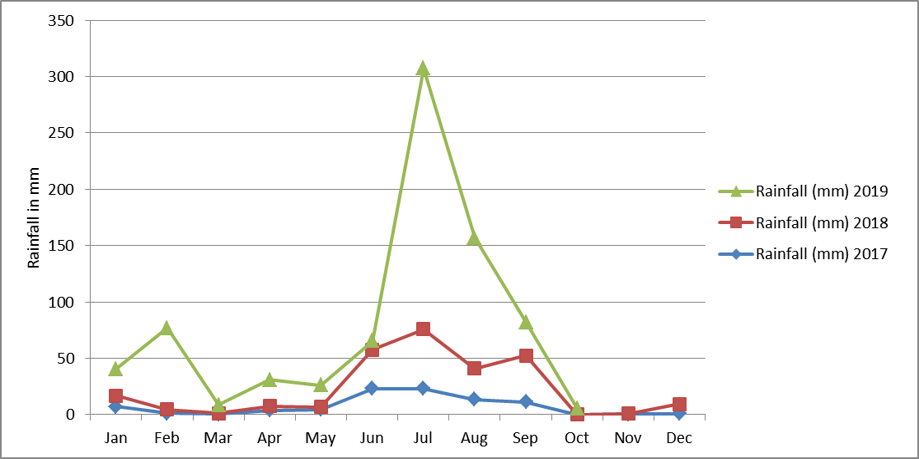
The graphical representation below is the temperature data of Hisar predicted for this Kharif season 2019. For Kharif 2019, there is notable increase in temperature upto to 1°C as compared to year 2017 and 2018. The maximum temperature in the district being higher than 40 °C is analyzed in 2019. The graph compares the temperature condition for previous 2 years i.e. 2017 and 2018 followed by 2019.
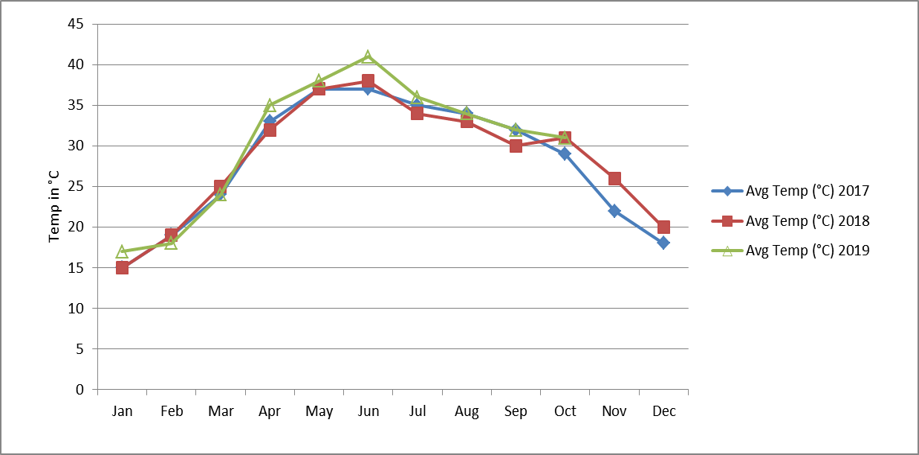
The map below depicts an overall increase in rainfall pattern of the country. India Meteorological Department has recorded a surplus precipitation in the state. Rainfall being more than 30 cm in Haryana, production of paddy has been improved with a considerable growth.
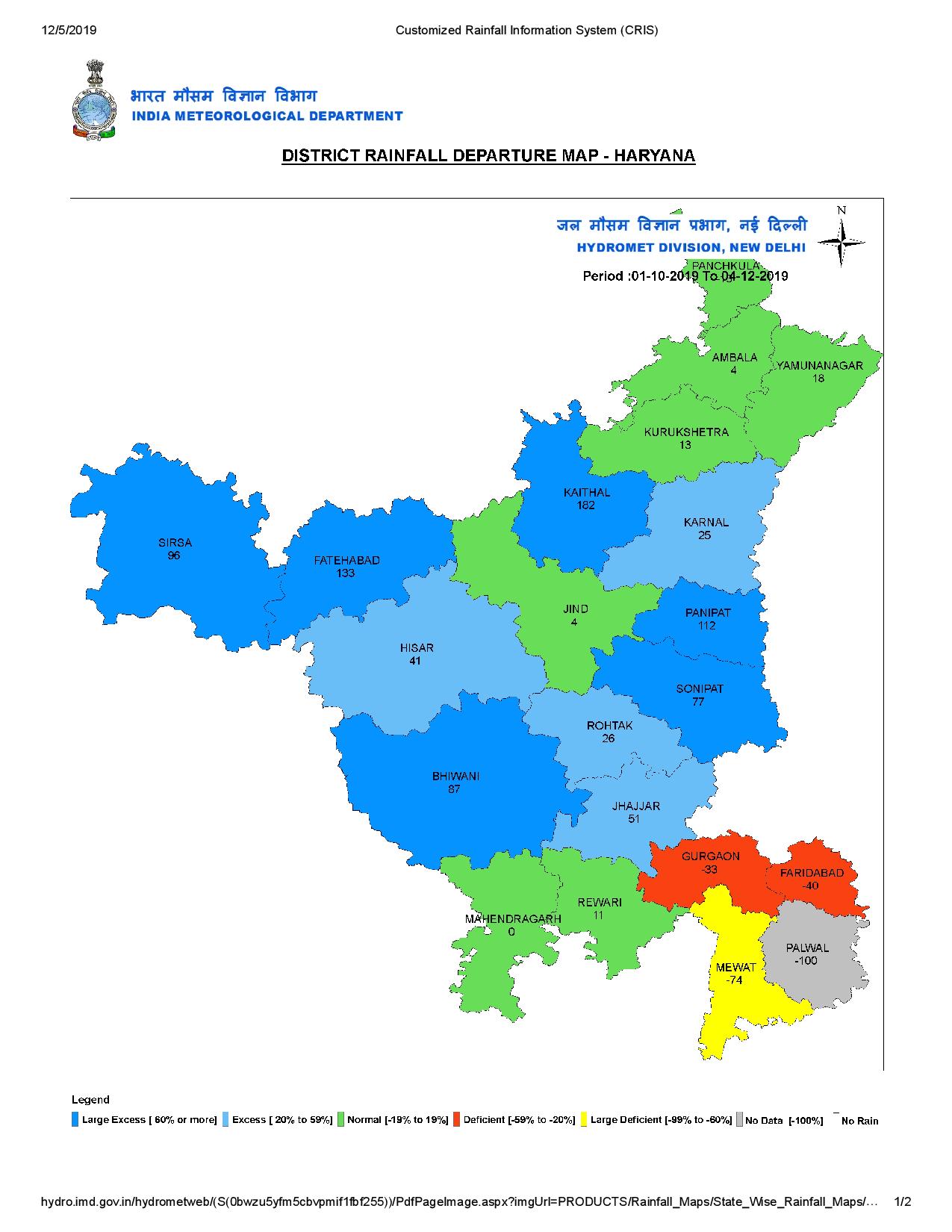
Results
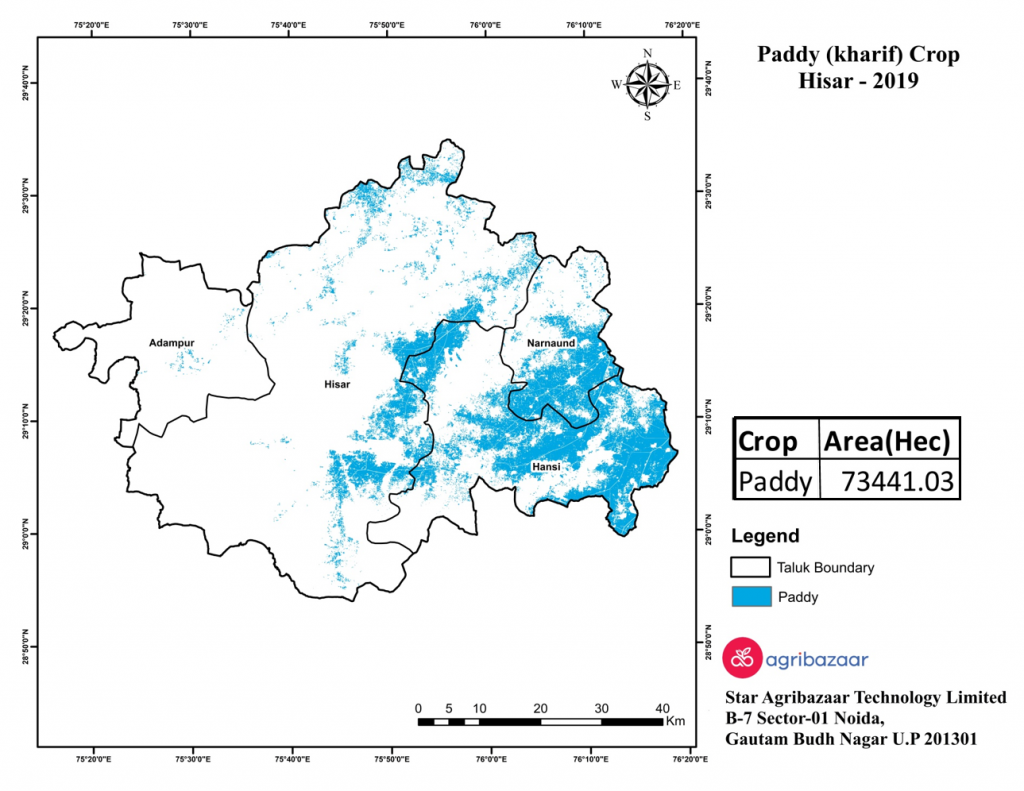
- Crop Production: As per the crop assessment in the Hisar district, paddy crop experiences the highest production in Hansi i.e. 98033 tons followed by 52420 tons in Hisar, 38917 tons in Narnaund and lastly 793 tons in Adampur.
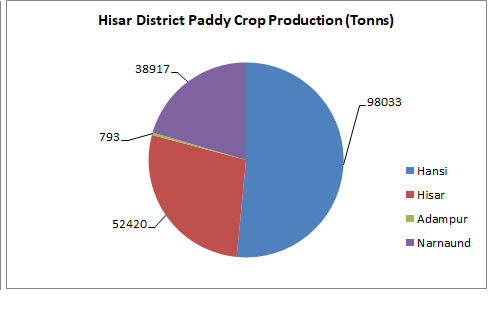
- Crop Variation: The crop acreage in Kharif season 2019 is expecting paddy to be sown the highest in Hisar i.e. 37845 ha. After Hisar, the second highest acreage is predicted to be for Hisar at 20363 ha followed by Narnaund at 14928 ha and Adampur at 305 ha.
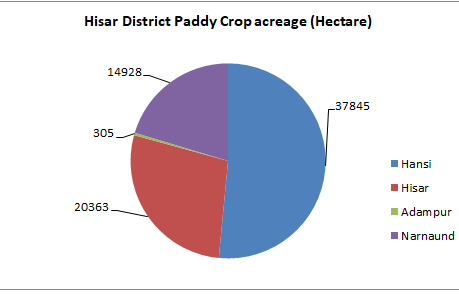
- Yield Estimation (Taluk-wise): The image below represents the graphical representation of paddy yields estimated in this season in Hisar. The predicted assessments evaluate that paddy crop of good quality will be the highest yield this Kharif season in Hansi taluka of Hisar district.
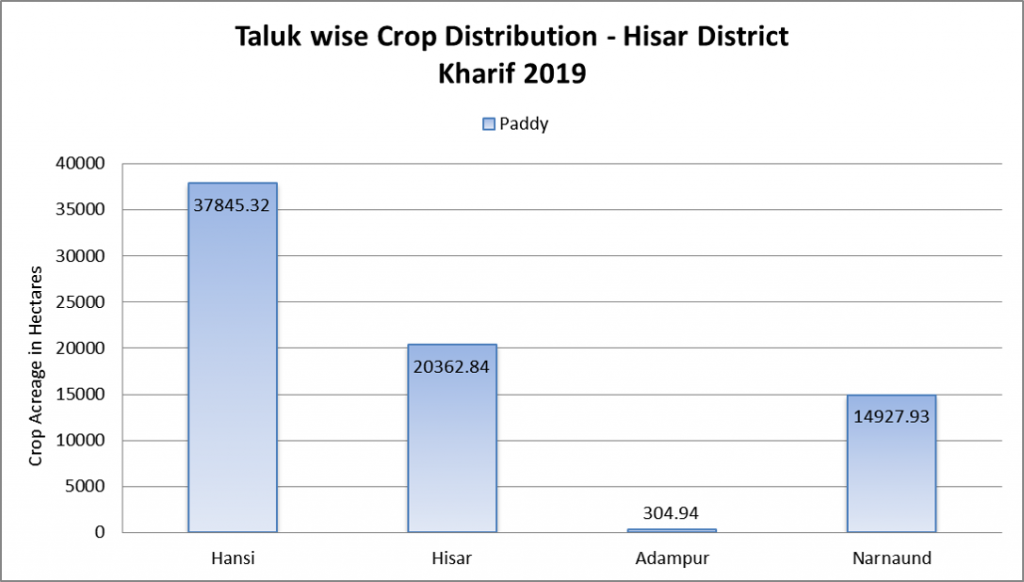
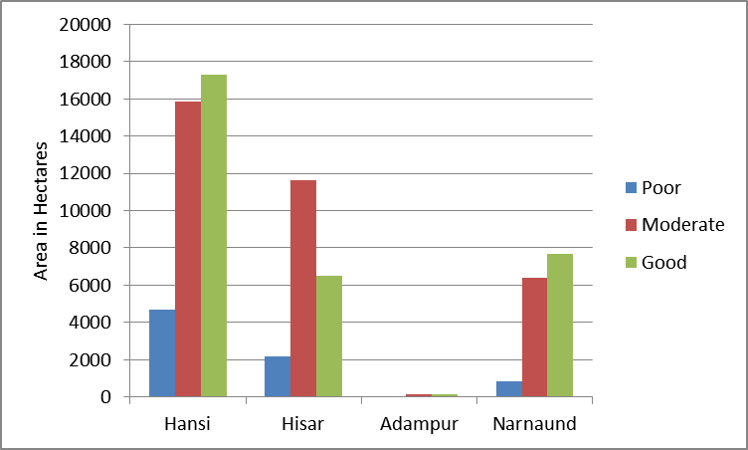
Crop health map of Hisar, Haryana Kharif crop 2019
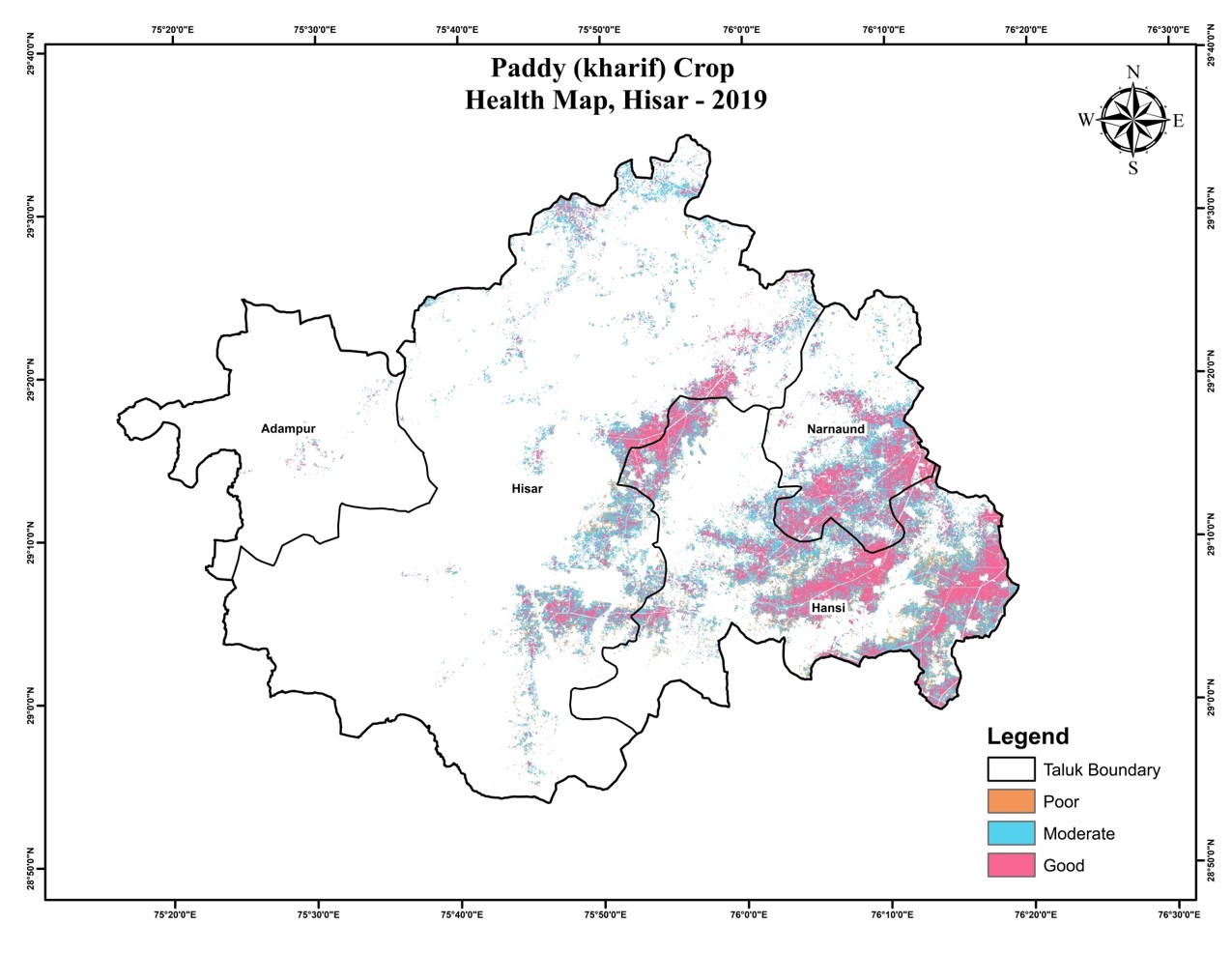
Conclusion
According to the estimated data, paddy production and acreage has been predicted to the highest in Hansi taluk of the district. The production and acreage in Hansi being 98033 tons and 37845 ha, respectively. However, Narnaund has been estimated to produce the lowest quantity in paddy production and the lowest acreage being 38917 tons and 14928 ha, respectively.
Conclusively, amongst poor, moderate and good quality of paddy yield, good paddy crop is highest sown and grown in the district. The productivity for good paddy crop has been the highest being 2679 kg/ha whereas the acreage is the maximum for moderate paddy crop at 34056 ha.



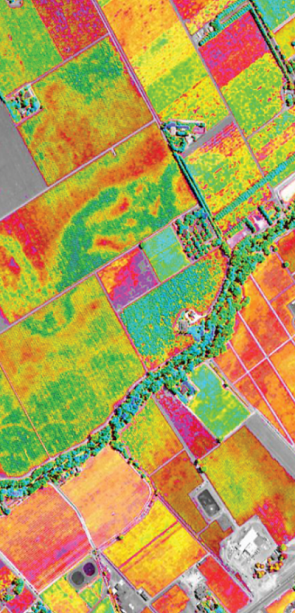




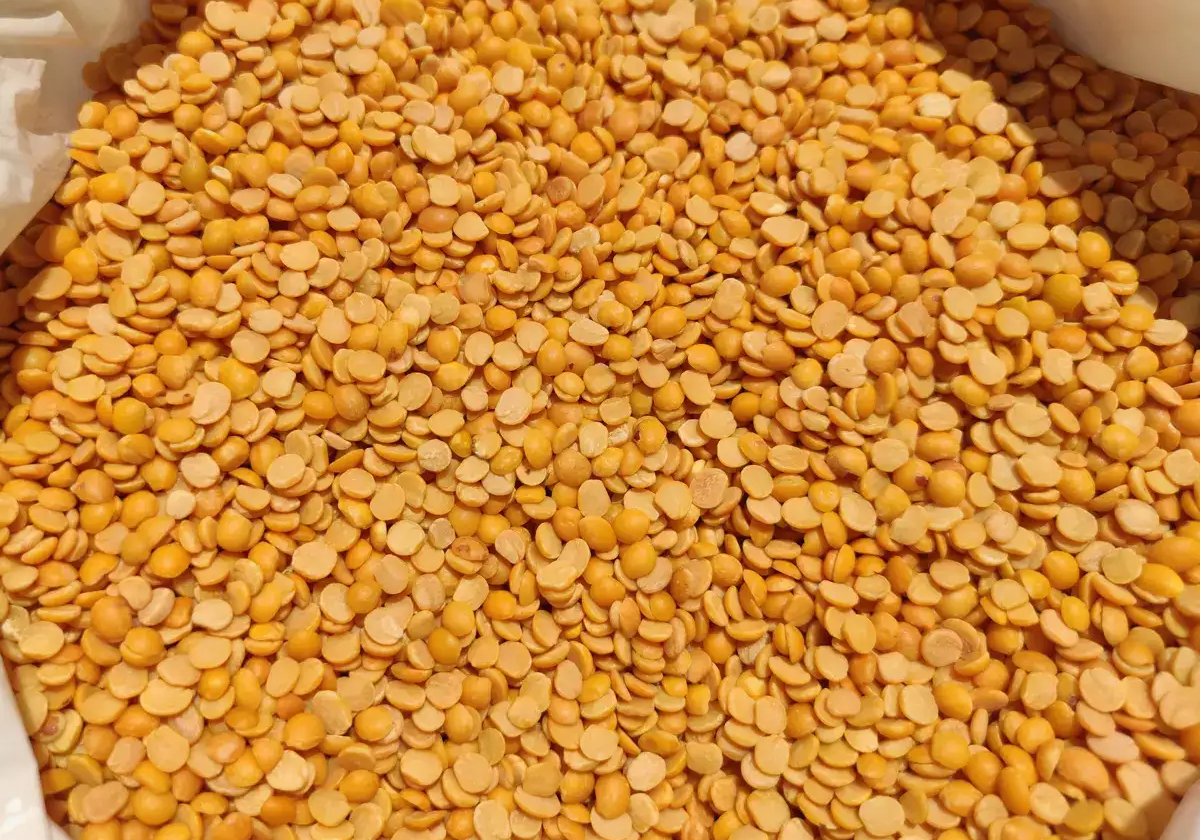

 Connect With Us
Connect With Us